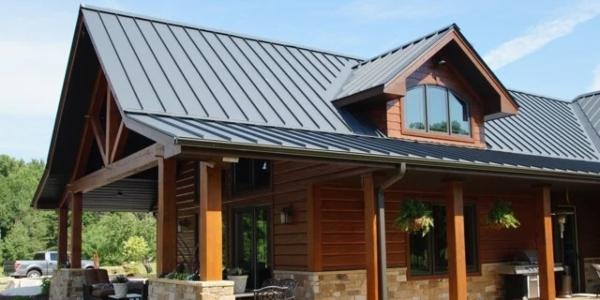Project Risk Management – Part Three

By John Kenney, Cotney Consulting Group.
Learn to identify key quantitative elements in your risk management plan.
In part one and part two, we learned about the meaning of risk management and understanding risk with project management. In Part Two, we discussed recognizing and classifying risks before you begin a project and avoid potential losses. In part three of this project risk series, we will discuss the quantitative elements and the benefits of having a risk plan for your roofing company.
Quantitative elements of your risk management plan
By now, you have completed the qualitative risk assessment and documented and assigned a numerical value to each risk. This information determines your roofing project's cost and time contingencies. During the quantitative risk management process, you will convert the impact of risk on the project into percentages.
The outcome will depend on the quantity and accuracy of your data. For example, Risk A has an 80% chance of occurring based on your compiled quantifiable data. As a result, risk A has a 25% chance of causing a delay of X days.
Three risk elements that you should consider:
- Schedule: Determine if the project can be completed within the allowed time frame.
- Cost: Determine if the project can be completed within the budget.
- Performance: Determine if the finished project satisfies your business goals.
Once these risks are quantified, you can develop an effective mitigation strategy or add the proper contingencies to the project estimate.
Cost risk analysis
Contingency is the funds added to the estimated costs to cover any uncertainty or risk exposure, which forms the material side of risk management. You can cover the costs of risk exposure by adding a contingency to the total project cost. For example, contingency monies can be used to purchase additional materials, labor, and equipment due to errors that may have occurred when the estimate was assembled. Contingency funding should not be used to hide any mistakes that may arise during the installation process.
Schedule risk analysis
A schedule risk analysis will assist you in evaluating the possible impacts of uncertainty on the project duration and cost. During this analysis, a project manager identifies the risks to the project plan and proposes solutions to mitigate these risks to achieve a better outcome. Project managers often tend to be too optimistic or over-cautious, leading to estimation errors. That's why it's essential to follow all four steps of schedule risk analysis:
- Baseline: Create an activity timetable
- Define risks: The project manager will estimate the effects of unexpected events on the project results.
- Run simulations: Create several project progress scenarios determining the duration and cost for each project activity.
- Interpret the results: You prepare a set of measures ranging in criticality and sensitivity.
In our uncertain world of complex roofing projects, certainty is a rare commodity. When performing your schedule risk analysis, look at the project activity durations with reasonable suspicion, trying to identify the difficulties that may occur in advance. The process can be challenging, but by using the right resources and tools, you and your company will benefit from your efforts.
Benefits of roofing risk management plans
Greater operational consistency & efficiency: roofing contractors with risk management plans will be sufficiently equipped financially when a problem arises. They will gain the knowledge and workflows to make decisions and avoid risk, improving your roofing business's efficiency. When contractors plan for the risks and respond to them promptly and skillfully, they save time, money, and resources. While also allowing your operations team to spend more time working on value-added workflows instead of constantly firefighting. Without a well-defined risk management strategy, you are weaker and more exposed to problems.
Greater confidence in your projects: knowing your risks and budget for dealing with them and having a clear path to mitigating them, you and your employees will gain confidence in the success of your projects.
Improved safety: risk management identifies possible risks, problems, or disasters before they hit your project, which is why they are indispensable. It builds trust in your company by ensuring a safe and secure environment for employees and customers. Other benefits include reduced legal liability and litigation, as well as a decreased number of injuries, hazards, and risks on your job sites.
Increased profits: All roofing contractors face unanticipated events, such as extreme weather, loss of money through theft, or employee injury. These events will cost your company money and can lead to bankruptcy.
Preparing for the unexpected will minimize extra costs before they happen with a thorough risk assessment that reduces the likelihood of workplace accidents and identifies areas for improved work processes or training, which also adds profit to the bottom line.
A risk management plan increases your operations' financial stability and can save you on insurance premiums. Insurance companies will view your organization more favorably if you prove you have a stable risk management plan that can help reduce the impact of potential claims.
Risk assessments will require more time, energy, and resources the first time you implement them. The first risk management plan you create will be the most resource-intensive because you are revising your entire work process. After that, the process becomes more efficient and improved. Using a clearly defined risk management plan allows you to capitalize on your company's strengths. The risk management plan helps you evaluate your current project's success but also enables you to build best practices for the future.
Learn more about Cotney Consulting Group in their directory or visit www.cotneyconsulting.com.
About John Kenney
John Kenney is the Chief Executive Officer at Cotney Consulting Group. Prior to starting Cotney, John had 45 years of experience in the construction industry. John began his career by working as a roofing apprentice at a family business in the Northeast. Because of his skill and hard work, he progressed from roofing laborer to foreman, estimator, chief estimator, Vice President, and Chief Operating Officer with his various companies. John has worked for multiple Top 100 Roofing Contractors and is intimately familiar with all aspects of roofing production, estimating, and operations. In his last role, John was responsible for the daily operations and performance of a large commercial roofing contractor. During his tenure, John ran business units associated with delivering excellent workmanship and unparalleled customer service while ensuring healthy net profits for his company.




















Comments
Leave a Reply
Have an account? Login to leave a comment!
Sign In